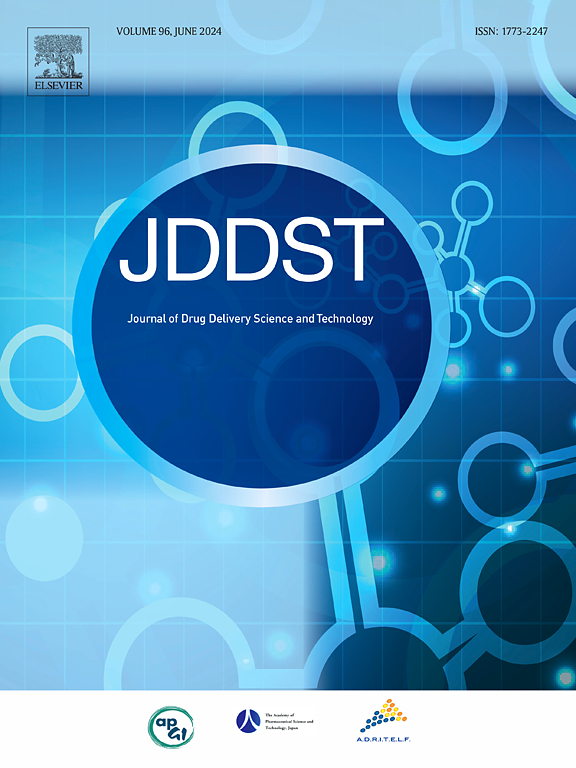An arginine-rich motif of the HIV-1 TAT protein promotes E. coli cellular entry and DNA delivery
IF 4.5
3区 医学
Q1 PHARMACOLOGY & PHARMACY
Journal of Drug Delivery Science and Technology
Pub Date : 2025-03-28
DOI:10.1016/j.jddst.2025.106864
引用次数: 0
Abstract
E. coli is an attractive non-viral gene delivery vector due to its low immunogenicity and large gene-carrying capacity. However, its inherently low efficiency has been a significant obstacle that has limited its adoption for gene delivery. We tested a trimer of (HIV-1) Transactivator Transcription protein (TAT) 47–57 with cell-penetrating ability and nuclear localization sequences to enhance the efficiency of the E. coli vectors gene delivery into cancer cells, a strategy not explored before. Fourier-transformed Infrared (FTIR) and Raman spectroscopy (RAMAN) were used to study the interaction between the E. coli vector and TAT3 peptide, and this result was validated with atomic force microscopy (AFM) and Scanning electron microscopy (SEM). We demonstrate for the first time that a hybrid vector can be formed between the E. coli vector and TAT3. This hybrid vector formation is likely due to the electrostatic interaction between the negatively charged outer membrane of E. coli and the highly positively charged TAT3 peptides. Our result suggested that the TAT3 is internalized into E. coli and coated its surface to improve cellular uptake and gene delivery efficiency. TAT3 peptide enhances E. coli gene transfer efficiency by over 2.5 fold in HeLa, HT1080, HEK-293, and 1.3 fold in MCF-7, but not in A549. Additionally, internalization of E. coli increased by 1.2 fold in HeLa with no significant uptake by A549, demonstrating that cellular entry is a prerequisite to higher gene expression. This TAT-based complexing method may be applied to other bacterial-based vectors to enhance DNA and protein delivery into cells for DNA vaccination and cancer gene therapy.

求助全文
约1分钟内获得全文
求助全文
来源期刊
CiteScore
8.00
自引率
8.00%
发文量
879
审稿时长
94 days
期刊介绍:
The Journal of Drug Delivery Science and Technology is an international journal devoted to drug delivery and pharmaceutical technology. The journal covers all innovative aspects of all pharmaceutical dosage forms and the most advanced research on controlled release, bioavailability and drug absorption, nanomedicines, gene delivery, tissue engineering, etc. Hot topics, related to manufacturing processes and quality control, are also welcomed.

 求助内容:
求助内容: 应助结果提醒方式:
应助结果提醒方式:


